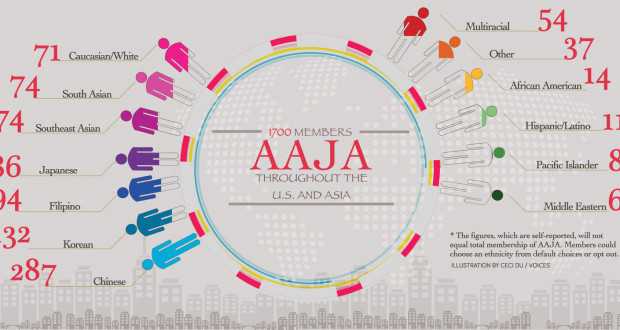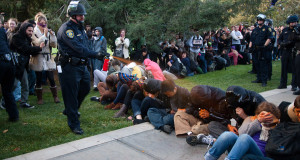When 33-year-old Rashad Al-Dabbagh sat down to fill out the U.S. Census form for the first time in 2000, he was stumped.
“You had all these ethnicities and nationalities and races, and nothing that said Arab or Middle Eastern,” said Al-Dabbagh, whose ethnic background is Palestinian and Armenian.
So, for the past two censuses, he checked the box for “some other race” and called on others in an eight-second video and through outreach to Arab Americans to do the same using the slogan: “Check it right; you ain’t white!”
Nearly 200,000 people did just that in 2010, despite 2006-10 data showing that more than 1.5 million people reported they are of Arab ancestry, according to an American Community Survey Brief published by the U.S. Census Bureau in 2013.
Today, the lack of a Middle Eastern/North African box has meant that statistics regarding the Arab American population are inaccurate and even undercounted, according to organizations such as the Arab American Institute, which puts the number of Arab Americans living in the United States at about 3.5 million.
People of Asian heritage, on the other hand, have had some type of racial category on the U.S. decennial census form since 1860 — when “Chinese” was added to the race question in California. Today, there are 11 racial categories for people of Asian and Pacific Island descent: Asian Indian, Chinese, Filipino, Japanese, Korean, Vietnamese, other Asian, Native Hawaiian, Guamanian or Chamorro, Samoan, other Pacific Islander.
Arabs were once considered Asian, but in 1909, people who emigrated from Lebanon and Syria fought to be legally considered white instead of Asian. At the center of the debate was anti-Asian legislation that restricted immigration and denied Asians U.S. citizenship.
Such laws were first passed in 1882, when Congress voted to approve the Chinese Exclusion Act. Amendments and additions continued until President Lyndon B. Johnson signed into law the Immigration Act of 1965, which prohibited immigration restrictions based on “national origins.”
Because Arab countries such as Syria, Saudi Arabia and Lebanon are on the Asian continent, Middle Easterners were caught under the law’s umbrella. However, the court ruled these individuals were, in fact, white, setting a precedent for other Arabs.
“At the time it served the purpose because people wanted to become citizens,” said Al-Dabbagh, who worked for the U.S. Census Bureau for nearly two years, starting in in 2009, as a partner specialist reaching out to the Arab community. “Now things are different.”
The addition of a Middle Eastern/North African category could mean, among other things, that Arab Americans would be covered by government policies protecting minorities and requiring election ballots to be printed in Arabic like other minority languages.
“In many cases, [race] is a subjective opinion,” said Helen Hatab Samhan, a board member for the Arab American Institute and Foundation. “It’s your own life experience and how you were treated by other people, and how you felt part of the white community.”
One anthropologist even called race a man-made invention.
“Racial categories that are in common use today have not always been in common use,” said Ed Liebow, executive director of the American Anthropological Association. “There have formerly been lots of other categories used, and if you look even at the Census … the questions have changed over time.”
The Census Bureau states on its website that it is aware that its racial categories “reflect a social definition of race recognized in this country.”
The standards for collecting data on race and ethnicity are set by the Office of Management and Budget, which first set those standards in 1977 and last amended them in 1997. That has led some to call the standards outdated.
The Arab American Institute sent a letter signed by 30 advocacy groups to the Census Bureau and OMB asking for the inclusion of a Middle Eastern/North African category on the 2020 Census form.
Roberto Ramirez, chief of the Bureau’s Ethnicity and Ancestry Branch, said the Bureau is “seriously considering testing” such a category, but no official decision has been made.
“The Census Bureau is all about including everyone,” Ramirez said. “As you can imagine, these are very sensitive topics and very complicated histories.”
This isn’t the first time Middle Easterners and North Africans have called for their own category. In 1997, the Office of Management and Budget considered such a category, but at the time there wasn’t complete agreement over what groups to include, Ramirez said.
“Turkey, in or out? Israel, in or out? Use just the Arab League States, or is that too political? In the absence of strong agreement, they decided to leave out the category altogether,” Liebow said.
Accurate data on any racial or ethnic category is essential because those statistics can bring in such benefits as federal funding, grants and policy changes, said Al-Dabbagh, who is now a spokesman and board member for the Network of Arab American Professionals.
Instead, Al-Dabbagh said, people of Middle Eastern and North African origin are counted as white and don’t get the benefits of minorities, “but we’re not treated as white.”
Follow @whatnuransaid on Twitter.
 VOICES Publishing from the AAJA National Convention
VOICES Publishing from the AAJA National Convention






